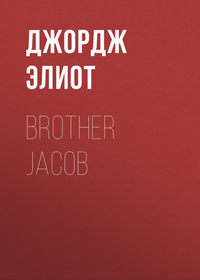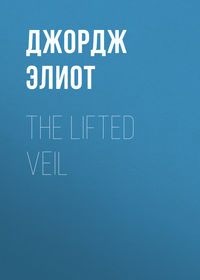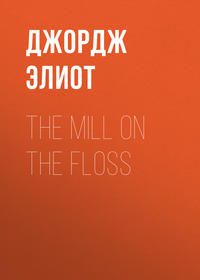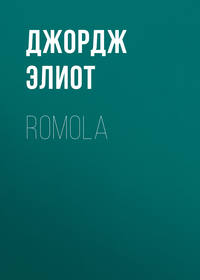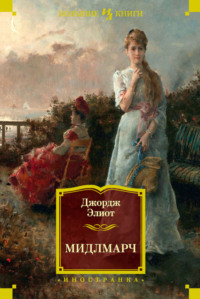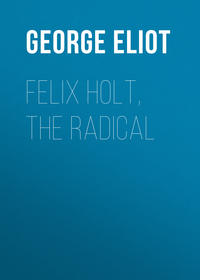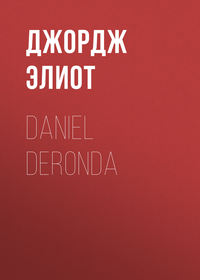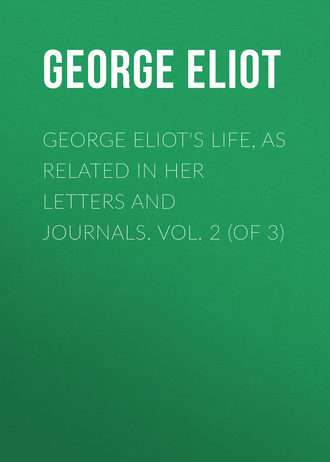 полная версия
полная версияGeorge Eliot's Life, as Related in Her Letters and Journals. Vol. 2 (of 3)
CHAPTER X
Italy, 1860.
We have finished our journey to Italy – the journey I had looked forward to for years, rather with the hope of the new elements it would bring to my culture than with the hope of immediate pleasure. Travelling can hardly be without a continual current of disappointment, if the main object is not the enlargement of one's general life, so as to make even weariness and annoyances enter into the sum of benefit. One great deduction to me from the delight of seeing world-famous objects is the frequent double consciousness which tells me that I am not enjoying the actual vision enough, and that, when higher enjoyment comes with the reproduction of the scenes in my imagination, I shall have lost some of the details, which impress me too feebly in the present, because the faculties are not wrought up into energetic action.
I have no other journal than the briefest record of what we did each day, so I shall put down my recollections whenever I happen to have leisure and inclination – just for the sake of making clear to myself the impressions I have brought away from our three months' travel.
The first striking moment in our journey was when we arrived, I think about eleven o'clock at night, at the point in the ascent of the Mont Cenis where we were to quit the diligences and take to the sledges. After a hasty drink of hot coffee in the roadside inn, our large party – the inmates of three diligences – turned out into the starlight to await the signal for getting into the sledges. That signal seemed to be considerably on in the future – to be arrived at through much confusion of luggage-lifting, voices, and leading about of mules. The human bustle and confusion made a poetic contrast with the sublime stillness of the starlit heavens spread over the snowy table-land and surrounding heights. The keenness of the air contributed strongly to the sense of novelty; we had left our every-day, conventional world quite behind us, and were on a visit to Nature in her private home.
Once closely packed in our sledge, congratulating ourselves that, after all, we were no more squeezed than in our diligence, I gave myself up to as many naps as chose to take possession of me, and actually slept without very considerable interruption till we were near the summit of the mighty pass. Already there was a faint hint of the morning in the starlight, which showed us the vast, sloping snow-fields as we commenced the descent. I got a few glimpses of the pure, far-stretching whiteness before the sharpening edge of cold forced us to close the window. Then there was no more to be seen till it was time to get out of the sledge and ascend the diligence once more; not, however, without a preliminary struggle with the wind, which fairly blew me down on my slippery standing-ground. The rest of our descent showed us fine, varied scenes of mountain and ravine till we got down at Susa, where breakfast and the railway came as a desirable variety after our long mountain journey and long fast. One of our companions had been a gigantic French soldier, who had in charge a bag of government money. He was my vis-à-vis for some time, and cramped my poor legs not a little with his precious bag, which he would by no means part from.
The approach to Turin by the railway gave us a grand view of snowy mountains surrounding the city on three sides. A few hours of rest spent there could leave no very vivid impression. A handsome street, well broken by architectural details, with a glimpse of snowy mountains at the end of the vista, colonnades on each side, and flags waving their bright colors in sign of political joy, is the image that usually rises before me at the mention of Turin. I fancy the said street is the principal one, but in our walk about the town we saw everywhere a similar character of prosperous, well-lodged town existence – only without the colonnades and without the balconies and other details, which make the principal street picturesque. This is the place that Alfieri lived in through many of his young follies, getting tired of it at last for the Piedmontese pettiness of which it was the centre. And now, eighty years later, it is the centre of a widening life which may at last become the life of resuscitated Italy. At the railway station, as we waited to take our departure for Genoa, we had a sight of the man whose name will always be connected with the story of that widening life – Count Cavour – "imitant son portrait," which we had seen in the shops, with unusual closeness. A man pleasant to look upon, with a smile half kind, half caustic; giving you altogether the impression that he thinks of "many matters," but thanks Heaven and makes no boast of them. He was there to meet the Prince de Carignan, who was going to Genoa on his way towards Florence by the same train as ourselves. The prince is a notability with a thick waist, bound in by a gold belt, and with a fat face, predominated over by a large mustache – "Non ragionam di lui." The railway journey from Turin was chiefly distinguished by dust; but I slept through the latter half, without prejudice, however, to the satisfaction with which I lay down in a comfortable bedroom in the Hotel Feder.
In Genoa again on a bright, warm spring morning! I was here eleven years ago, and the image that visit had left in my mind was surprisingly faithful, though fragmentary. The outlook from our hotel was nearly the same as before – over a low building with a colonnade, at the masts of the abundant shipping. But there was a striking change in the interior of the hotel. It was like the other, a palace adapted to the purposes of an inn; but be-carpeted and be-furnished with an exaggeration of English fashion.
We lost no time in turning out, after breakfast, into the morning sunshine. George was enchanted with the aspect of the place, as we drove or walked along the streets. It was his first vision of anything corresponding to his preconception of Italy. After the Adlergasse, in Nürnberg, surely no streets can be more impressive than the Strada Nuova and Strada Nuovissima, at Genoa. In street architecture I can rise to the highest point of the admiration given to the Palladian style. And here in these chief streets of Genoa the palaces have two advantages over those of Florence: they form a series, creating a general impression of grandeur of which each particular palace gets the benefit; and they have the open gateway, showing the cortile within – sometimes containing grand stone staircases. And all this architectural splendor is accompanied with the signs of actual prosperity. Genova la Superba is not a name of the past merely.
We ascended the tower of Santa Maria di Carignano to get a panoramic view of the city, with its embosoming hills and bay – saw the cathedral, with its banded black-and-white marble – the churches of the Annunziata and San Ambrogio, with their wealth of gilding and rich pink-brown marbles – the Palazzo Rosso, with its collection of eminently forgettable pictures – and the pretty gardens of the Palazzo Doria, with their flourishing green close against the sea.
A drive in the direction of the Campo Santo, along the dry, pebbly bed of the river, showed us the terraced hills planted with olives, and many picturesque groups of the common people with mules or on carts; not to mention what gives beauty to every corner of the inhabited world – the groups of children squatting against walls or trotting about by the side of their elders or grinning together over their play.
One of the personages we were pleased to encounter in the streets here was a quack – a Dulcamara – mounted on his carriage and holding forth with much brio before proceeding to take out the tooth of a negro, already seated in preparation.
We left Genoa on the second evening – unhappily, a little too long after sundown, so that we did not get a perfect view of the grand city from the sea. The pale starlight could bring out no color. We had a prosperous passage to Leghorn.
Leghorn on a brilliant, warm morning, with five or six hours before us to fill as agreeably as possible! Of course, the first thought was to go to Pisa, but the train would not start till eleven; so, in the meantime, we took a drive about the prosperous-looking town, and saw the great reservoir which receives the water brought from the distant mountains; a beautiful and interesting sight – to look into the glassy depth and see columns and grand arches reflected as if in mockery and frustration of one's desire to see the bottom. But in one corner the light fell so as to reveal that reality instead of the beautiful illusion. On our way back we passed the Hebrew synagogue, and were glad of our coachman's suggestion that we should enter, seeing it was the Jews' Sabbath.
At Pisa we took a carriage and drove at once to the cathedral, seeing as we went the well-looking lines of building on each side of the Arno.
A wonderful sight is that first glimpse of the cathedral, with the leaning campanile on one side and the baptistery on the other, green turf below, and a clear, blue sky above! The structure of the campanile is exquisitely light and graceful – tier above tier of small circular arches, supported by delicate, round pillars narrowing gradually in circumference, but very slightly, so that there is no striking difference of size between the base and summit. The campanile is all of white marble, but the cathedral has the bands of black and white, softened in effect by the yellowing which time has given to the white. There is a family likeness among all these structures: they all have the delicate little colonnades and circular arches. But the baptistery has stronger traits of the Gothic style in the pinnacles that crown the encircling colonnade.
After some dusty delay outside the railway station we set off back again to Livorno, and forthwith got on board our steamboat again – to awake next morning (being Palm-Sunday) at Civita Vecchia. Much waiting before we were allowed to land; and again much waiting for the clumsy process of "visiting" our luggage. I was amused while sitting at the Dogana, where almost every one was cross and busy, to see a dog making his way quietly out with a bone in his mouth.
Getting into our railway carriage, our vis-à-vis– a stout, amiable, intelligent Livornian, with his wife and son, named Dubreux – exclaimed, "C'en est fini d'un peuple qui n'est pas capable de changer une bêtise comme ça!" George got into pleasant talk with him, and his son, about Edinburgh and the scientific men there – the son having been there for some time in order to go through a course of practical science. The father was a naturalist – an entomologist, I think.
It was an interesting journey from Civita Vecchia to Rome: at first, a scene of rough, hilly character, then a vast plain, frequently marshy, crowded with asphodels, inhabited by buffaloes; here and there a falcon or other slow, large-winged bird floating and alighting.
At last we came in sight of Rome, but there was nothing imposing to be seen. The chief object was what I afterwards knew to be one of the aqueducts, but which I then, in the vagueness of my conceptions, guessed to be the ruins of baths. The railway station where we alighted looked remote and countrified; only the omnibuses and one family carriage were waiting, so that we were obliged to take our chance in one of the omnibuses – that is, the chance of finding no place left for us in the hotels. And so it was. Every one wanted to go to the Hotel d'Angleterre, and every one was disappointed. We, at last, by help of some fellow-travellers, got a small room au troisième at the Hotel d'Amérique; and as soon as that business was settled we walked out to look at Rome – not without a rather heavy load of disappointment on our minds from the vision we had of it from the omnibus windows. A weary length of dirty, uninteresting streets had brought us within sight of the dome of St. Peter's, which was not impressive, seen in a peeping, makeshift manner, just rising above the houses; and the Castle of St. Angelo seemed but a shabby likeness of the engravings. Not one iota had I seen that corresponded with my preconceptions.
Our hotel was in the Strada Babuino, which leads directly from the Piazza del Popolo to the Piazza di Spagna. We went to the latter for our first walk, and arriving opposite the high, broad flights of stone steps which lead up to the Trinità di Monte, stopped for the first time with a sense that here was something not quite common and ugly. But I think we got hardly any farther, that evening, than the tall column at the end of the piazza, which celebrates the final settlement by Pius IX. of the Virgin's Immaculate Conception. Oh, yes; I think we wandered farther among narrow and ugly streets, and came into our hotel again still with some dejection at the probable relation our "Rome visited" was to bear to our "Rome unvisited."
Discontented with our little room at an extravagant height of stairs and price, we found and took lodgings the next day in the Corso opposite St. Carlo, with a well-mannered Frenchman named Peureux and his little, dark, Italian wife – and so felt ourselves settled for a month. By this time we were in better spirits; for in the morning we had been to the Capitol (Campidoglio, the modern variant for Capitolium), had ascended the tower, and had driven to the Coliseum. The scene, looking along the Forum to the Arch of Titus, resembled strongly that mixture of ruined grandeur with modern life which I had always had in my imagination at the mention of Rome. The approach to the Capitol from the opposite side is also impressive: on the right hand the broad, steep flight of steps leading up to the Church and Monastery of Ara Cœli, placed, some say, on the site of the Arx; in the front a less steep flight of steps à cordon leading to that lower, flatter portion of the hill which was called the Intermontium, and which now forms a sort of piazza, with the equestrian statue of Marcus Aurelius in the centre, and on three sides buildings designed, or rather modified, by Michael Angelo – on the left the Museum, on the right the Museo dei Conservatori, and, on the side opposite the steps, the building devoted to public offices (Palazzo dei Senatori), in the centre of which stands the tower. On each hand, at the summit of the steps, are the two Colossi, less celebrated but hardly less imposing in their calm grandeur than the Colossi of the Quirinal. They are strangely streaked and disfigured by the blackening weather; but their large-eyed, mild might gives one a thrill of awe, half like what might have been felt by the men of old who saw the divine twins watering their steeds when they brought the news of victory.
Perhaps the world can hardly offer a more interesting outlook than that from the tower of the Capitol. The eye leaps first to the mountains that bound the Campagna – the Sabine and Alban Hills and the solitary Soracte farther on to the left. Then, wandering back across the Campagna, it searches for the Sister Hills, hardly distinguishable now as hills. The Palatine is conspicuous enough, marked by the ruins of the Palace of the Cæsars, and rising up beyond the extremity of the Forum. And now, once resting on the Forum, the eye will not readily quit the long area that begins with the Clivus Capitolinus and extends to the Coliseum – an area that was once the very focus of the world. The Campo Vaccino, the site probably of the Comitium, was this first morning covered with carts and animals, mingling a simple form of actual life with those signs of the highly artificial life that had been crowded here in ages gone by: the three Corinthian pillars at the extremity of the Forum, said to have belonged to the Temple of Jupiter Stator; the grand temple of Antoninus and Faustina; the white arch of Titus; the Basilica of Constantine; the temple built by Adrian, with its great, broken granite columns scattered around on the green, rising ground; the huge arc of the Coliseum and the arch of Constantine.
The scenes of these great relics remained our favorite haunt during our stay at Rome; and one day, near the end of it, we entered the enclosure of the Clivus Capitolinus and the excavated space of the Forum. The ruins on the Clivus – the façade of massive columns on the right, called the temple of Vespasian; the two Corinthian columns, called the temple of Saturn, in the centre; and the arch of Septimius Severus on the left – have their rich color set off by the luxuriant green, clothing the lower masonry, which formed the foundations of the crowded buildings on this narrow space, and, as a background to them all, the rough solidity of the ancient wall forming the back of the central building on the Intermontium, and regarded as one of the few remains of Republican constructions. On either hand, at another angle from the arch, the ancient road forming the double ascent of the Clivus is seen, firm and level, with its great blocks of pavement. The arch of Septimius Severus is particularly rich in color; and the poorly executed bas-reliefs of military groups still look out in the grotesque completeness of attitude and expression, even on the sides exposed to the weather. From the Clivus a passage, underneath the present road, leads into the Forum, whose immense pinkish granite columns lie on the weather-worn white marble pavement. The column of Phocas, with its base no longer "buried," stands at the extreme corner nearest the Clivus; and the three elegant columns of the temple (say some) of Jupiter Stator, mark the opposite extremity; between lie traces, utterly confused to all but erudite eyes, of marble steps and of pedestals stripped of their marble.
Let me see what I most delighted in, in Rome. Certainly this drive from the Clivus to the Coliseum was, from first to last, one of the chief things; but there are many objects and many impressions of various kinds which I can reckon up as of almost equal interest: the Coliseum itself, with the view from it; the drive along the Appian Way to the tomb of Cecilia Metella, and the view from thence of the Campagna bridged by the aqueduct; the baths of Titus, with the remnants of their arabesques, seen by the light of torches, in the now damp and gloomy spaces; the glimpse of the Tarpeian rock, with its growth of cactus and rough herbage; the grand, bare arch brickwork of the Palace of the Cæsars rising in huge masses on the Palatine; the theatre of Marcellus bursting suddenly into view from among the crowded mean houses of the modern city, and still more the Temple of Minerva and Temple of Nerva, also set in the crowded city of the present; and the exterior of the Pantheon, if it were not marred by the Papal belfries – these are the traces of ancient Rome that have left the strongest image of themselves in my mind. I ought not to leave out Trajan's column, and the forum in which it stands; though the severe cold tint of the gray granite columns, or fragments of columns, gave this forum rather a dreary effect to me. For vastness there is perhaps nothing more impressive in Rome than the Baths of Caracalla, except the Coliseum; and I remember that it was among them that I first noticed the lovely effect of the giant fennel, luxuriant among the crumbling brickwork.
Among the ancient sculptures I think I must place on a level the Apollo, the Dying Gladiator, and the Lateran Antinous: they affected me equally in different ways. After these I delighted in the Venus of the Capitol, and the Kissing Children in the same room; the Sophocles at the Lateran Museum; the Nile; the black, laughing Centaur at the Capitol; the Laughing Faun in the Vatican; and the Sauroktonos, or Boy with the Lizard, and the sitting statue called Menander. The Faun of Praxiteles, and the old Faun with the infant Bacchus, I had already seen at Munich, else I should have mentioned them among my first favorites. Perhaps the greatest treat we had at the Vatican was the sight of a few statues, including the Apollo, by torchlight – all the more impressive because it was our first sight of the Vatican. Even the mere hurrying along the vast halls, with the fitful torchlight falling on the innumerable statues and busts and bas-reliefs and sarcophagi, would have left a sense of awe at these crowded, silent forms which have the solemnity of suddenly arrested life. Wonderfully grand these halls of the Vatican are; and there is but one complaint to be made against the home provided for this richest collection of antiquities – it is that there is no historical arrangement of them, and no catalogue. The system of classification is based on the history of their collection by the different popes, so that for every other purpose but that of securing to each pope his share of glory, it is a system of helter-skelter.
Of Christian Rome, St. Peter's is, of course, the supreme wonder. The piazza, with Bernini's colonnades, and the gradual slope upward to the mighty temple, gave me always a sense of having entered some millennial new Jerusalem, where all small and shabby things were unknown. But the exterior of the cathedral itself is even ugly; it causes a constant irritation by its partial concealment of the dome. The first impression from the interior was, perhaps, at a higher pitch than any subsequent impression, either of its beauty or vastness; but then, on later visits, the lovely marble, which has a tone at once subdued and warm, was half-covered with hideous red drapery. There is hardly any detail one cares to dwell on in St. Peter's. It is interesting, for once, to look at the mosaic altar-pieces, some of which render with marvellous success such famous pictures as the Transfiguration, the Communion of St. Jerome, and the Entombment or Disentombment of St. Petronilla. And some of the monuments are worth looking at more than once, the chief glory of that kind being Canova's Lions. I was pleased one day to watch a group of poor people looking with an admiration that had a half-childish terror in it at the sleeping lion, and with a sort of daring air thrusting their fingers against the teeth of the waking "mane-bearer."
We ascended the dome near the end of our stay, but the cloudy horizon was not friendly to our distant view, and Rome itself is ugly to a bird's-eye contemplation. The chief interest of the ascent was the vivid realization it gave of the building's enormous size, and after that the sight of the inner courts and garden of the Vatican.
Our most beautiful view of Rome and the Campagna was one we had much earlier in our stay, before the snow had vanished from the mountains; it was from the terrace of the Villa Pamfili Doria.
Of smaller churches I remember especially Santa Maria degli Angeli, a church formed by Michael Angelo by additions to the grand hall in the Baths of Diocletian – the only remaining hall of ancient Rome; and the Church of San Clemente, where there is a chapel painted by Masaccio, as well as a perfect specimen of the ancient enclosure near the tribune, called the presbytery, with the ambones or pulpits from which the lessons and gospel were read. Santa Maria Maggiore is an exquisitely beautiful basilica, rich in marbles from a pagan temple; and the reconstructed San Paolo fuori le Mura is a wonder of wealth and beauty, with its lines of white-marble columns – if one could possibly look with pleasure at such a perverted appliance of money and labor as a church built in an unhealthy solitude. After St. Peter's, however, the next great monument of Christian art is the Sistine Chapel; but since I care for the chapel solely for the sake of its ceiling, I ought rather to number it among my favorite paintings than among the most memorable buildings. Certainly this ceiling of Michael Angelo's is the most wonderful fresco in the world. After it come Raphael's School of Athens and Triumph of Galatea, so far as Rome is concerned. Among oil-paintings there I like best the Madonna di Foligno, for the sake of the cherub who is standing and looking upward; the Perugino also, in the Vatican, and the pretty Sassoferrato, with the clouds budding angels; at the Barberini Palace, Beatrice Cenci, and Una Schiava, by Titian; at the Sciarra Palace, the Joueurs de Violon, by Raphael, another of Titian's golden-haired women, and a sweet Madonna and Child with a bird, by Fra Bartolomeo; at the Borghese Palace, Domenichino's Chase, the Entombment, by Raphael, and the Three Ages – a copy of Titian, by Sassoferrato.
We should have regretted entirely our efforts to get to Rome during the Holy Week, instead of making Florence our first resting-place, if we had not had the compensation for wearisome, empty ceremonies and closed museums in the wonderful spectacle of the illumination of St. Peter's. That, really, is a thing so wondrous, so magically beautiful, that one can't find in one's heart to say it is not worth doing. I remember well the first glimpse we had as we drove out towards it, of the outline of the dome like a new constellation on the black sky. I thought that was the final illumination, and was regretting our tardy arrival, from the détour we had to make, when, as our carriage stopped in front of the cathedral, the great bell sounded, and in an instant the grand illumination flashed out and turned the outline of stars into a palace of gold. Venus looked out palely.




